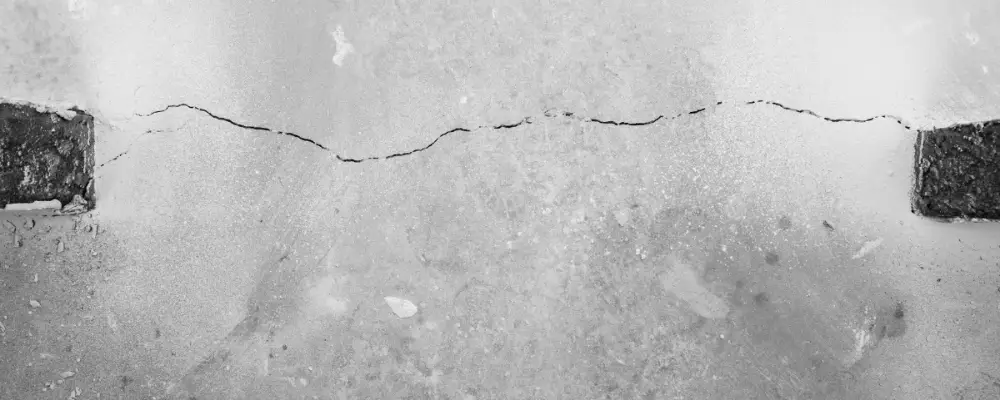It is a widely known fact that concrete is extremely durable and resistant to damage. While it is non-combustible and requires low maintenance, its susceptibility to cracking presents a different challenge. One of the primary causes of cracking in concrete is dry-shrinkage cracking, which can lead to bigger issues in the future. This shrinkage can pose challenges during the curing process of concrete.
In this article, we will explore what concrete shrinkage is, its types, causes, and the effects created in construction.
What is Shrinkage in Concrete
Concrete shrinkage is caused by a decrease in the length or volume of concrete. It happens when the changes occur due to chemical reactions or moisture content. However, concrete shrinkage is common in all construction; they are classified into different types. Based on the category of shrinkage, the curing process will be efficiently handled.
Causes of Concrete Shrinkage
Here are some causes that may lead to experience concrete shrinkage in construction:
- Environmental factors such as low humidity and high temperature can accelerate the drying process and cause shrinkage in concrete.
- The size, shape, and type of aggregates used in concrete can also influence shrinkage.
- A low water-cement ratio and high cementitious content can lead to drying shrinkage.
- Evaporation of water and moisture movement in concrete can affect shrinkage.
- Instability in concrete drying influences the curing process.
- Excessive water content in concrete and the contraction of hydration products can induce shrinkage.
Effects of Shrinkage in Concrete
Shrinkage in concrete contributes to various consequences, both concerning structural integrity and appearance. Some of the primary effects are:
Cracking
Cracking is the most common and visible consequence of shrinkage. When the concrete dries and shrinks, the cracking can occur. It not only reduces the structural integrity but also compromises their load-bearing capacity. Cracking eases the water penetration and leads to freeze-thaw damage, deterioration, and reinforcement. Aside from compromising strength, cracks can also detract from the appearance of concrete structures.
Structural Integrity
Structural integrity of the construction can be drastically compromised due to shrinkage-induced cracking. In extreme cases, cracks may lead to structural failure, which affects the overall aesthetic appeal and functionality. Shrinkage also results in loss of stiffness, leading to excessive movement or increased vibrations.
Types of Concrete Shrinkage and Their Preventions
Concrete shrinkage can be classified into the following types:
Plastic Shrinkage
Plastic shrinkage develops on the surface of fresh concrete due to fast evaporation or absorption of water from that surface. The water movement creates the contraction in length of volume of a concrete before it sets well. This can occur during the changes in environmental conditions or hydration process of wet concrete. The more the concrete dries, the greater the potential for plastic shrinkage.
How to Prevent Plastic Shrinkage
- Create proper vibration of the concrete.
- The use of evaporation reducers and microsynthetic fibers
- Prevent excessive temperature of the concrete mixture.
- Use of expansion cement and aluminium powder
- Covering the surface of a concrete with a polyethylene sheet
Drying Shrinkage
The pores in the building materials are unavoidable, resulting in the increased absorption of moisture content from the atmosphere and causing shrinkage. When the movements are reversible, cracks in buildings may occur due to drying shrinkage. It occurs when the water from exposed concrete quickly evaporates.
How to Prevent Drying Shrinkage
- A proper curing process is essential.
- Reduce the volume of cement paste.
- Maintaining an accurate level of water/cement ratio in the concrete mix
- Selecting high-quality ingredients for the concrete mix
Autogenous Shrinkage
Another type of concrete shrinkage occurs due to the chemical reactions that take place within the concrete. When the cement hydrates, it becomes denser and makes the concrete structure compact. If the water content in the concrete is insufficient for the hydration, swelling occurs.
How to prevent Autogenous Shrinkage
- By using low-heat cement and shrinkage-reducing admixture
- Adding pre-soaked lightweight aggregate
- Using polypropylene and steel fibers
- Adjusting the cement content in the mixture
Carbonation Shrinkage
Carbonation shrinkage are primarily found in hardened concrete. The calcium hydroxide from the hardened matrix reacts with carbon dioxide in the environment. It results in the formation of water and calcium carbonate, leading to the reduction in volume.
How to Prevent Carbonation Shrinkage
- Providing appropriate joints in the structure during casting
- Using lower cement content and a higher modulus of the aggregate
- Maintaining regular contraction joints in the concrete
Chemical and Thermal Shrinkage
The chemical binding of water in the cement hydration process typically reduces the volume of cement paste. It causes movement in the concrete and leads to chemical shrinkage. The variations in the temperature promote cracking in the concrete, which creates thermal contraction.
How to Prevent Chemical and Thermal Shrinkage
- Reduce the agents in the concrete.
- Use of shrinkage-compensating admixture
How is Concrete Shrinkage Prevented
The primary solution to reduce the concrete shrinkage is maintaining an appropriate water-cement ratio. When you want to acquire the desired workability, focus on adjusting the admixtures rather than the water content. Ensuring the ambient conditions like low humidity and high heat typically prevent shrinkage in the concrete. Beyond that, being aware of these strategies limits the damages.
- Adequate reinforcement
- Accurate shape and size of the concrete elements
- Protecting concrete surfaces from rapid moisture loss
Final Lines
This article discusses the types, causes, and prevention methods of concrete shrinkage. By following these guidelines carefully, you can get relief from unexpected damages caused by shrinkage. Get help from experts who can assist you in reducing issues with your project.

